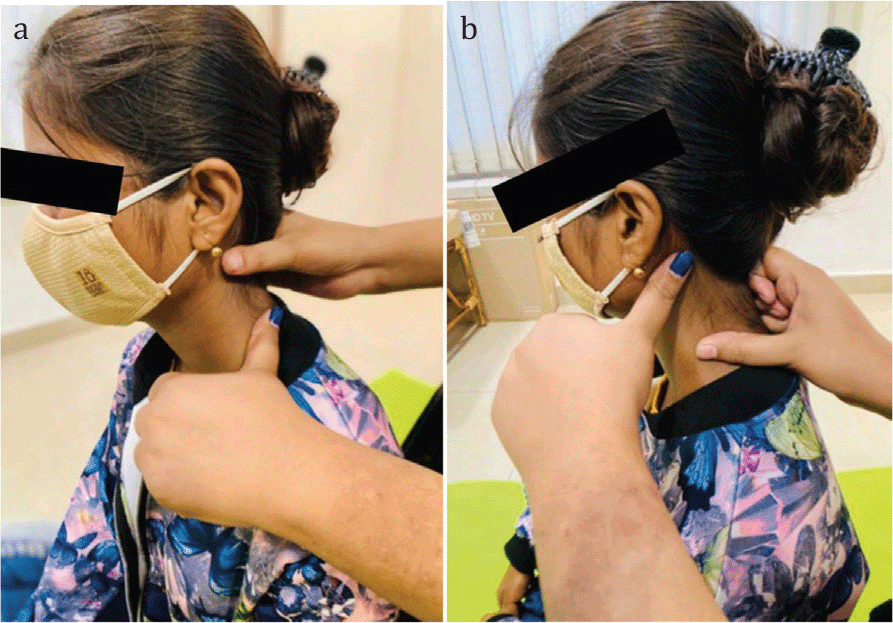
Integrative Medicine Case Reports, Volume 5, Issue 1 (January), 2024
Effect of Neurotherapy on Subclinical Hypothyroidism: A Case Report
KEY WORDS |
ABSTRACT |
|
Subclinical hypothyroidism
|
The biochemical definition of subclinical hypothyroidism (SH) is an elevation of serum Thyroid stimulating hormone (TSH) or thyrotropin level with the associated triioditroponin (T3) and thyroxine (T4) levels in normal reference range. If not prevented at the initial phase, SH eventually progresses into overt hypothyroidism thereby taking a massive toll on the human health. With the advancement of alternative science over the recent decades, a novel pain-free approach has been discussed that successfully treats SH within a span of two months. In this case study, a 23-year old woman reports severe fatigue, mild mood swings and constipation. Physical examination denotes no enlargement of the thyroid gland. However, laboratory results report an elevated serum TSH of 9.85 µIU/mL (reference range: 0.39-6.16 µIU/mL) with normal free T3 (1.79 ng/ml, reference range: 0.52-1.85 ng/ml) and T4(10.17 µIU/mL, reference range: 4.6-11.2 µIU/mL) levels. To prevent the progression of the condition, “Neurotherapy” treatment is provided to the patient. The study sought to determine whether this unique treatment was effective for a patient with SH. Post therapy, laboratory results show a significant reduction of the serum TSH with no associated side-effects, thereby confirming the effectiveness of neurotherapy treatment for the prevention and further progression of this condition. doi: 10.38205/imcr.050114 |
|
*Corresponding Author:
|
Introduction
Subclinical hypothyroidism (SH) is a laboratory-based biochemical condition and a potent risk factor for the development of overt hypothyroidism with advanced age especially among the female population (1). SH is medically described as an upraised level of serum thyroid stimulating hormone (TSH) that is associated with normal levels of triiodothyronine (T3) and thyroxine (T4) (2). About 80–90% of patients with SH are categorized into grade 1 SH which is represented by a TSH level of ≤ 9.9 micro-international units per milliliter (µIU/mL). Remaining patients fall under grade 2 SH category with TSH level ≥ 10.0 µIU/mL, thereby considering grade 2 as a severe grade of SH (2–4).
Although the most common source of origin of SH is an autoimmune disorder called the Hashimoto thyroiditis that causes impairment of the thyroid gland along with the occurrence of swelling and inflammation, multiple other reasons can also lead to the development of SH, namely, past history of thyroid surgeries, exposure to radiation therapy, consumption of drugs that are associated with the treatment of cancer or arrhythmic heartbeat (5). It has been noticed that most of the patients suffering from SH remains asymptomatic, therefore they get identified specifically with the help of laboratory examinations while undergoing a routine health checkup (6). Not only is identifying an individual with SH a challenging task, but if not diagnosed and treated immediately can lead to overt hypothyroidism (7).
Evidence suggests the prevalence of SH to be as high as 19.7-20% (8, 9) and the annual clinical advancement of SH to overt hypothyroidism to be 3.3-11.4% (10, 11). Preventing the progression of SH to overt hypothyroidism and restoring the serum TSH level to normal range is the sole purpose of treatment. For this, the oral consumption of Levothyroxine is the current treatment of choice (1). Regardless of this, looking at the higher prevalence of SH and with the expansion of alternative medicine, a quick irreversible novel approach to treat SH becomes the need of the hour.
Case Presentation
The given case was treated over a period of 8 weeks between the months of November-December 2022 in a Neurotherapy clinic situated in Kolkata. A written informed consent with the permission to take pictures during the application of therapy was obtained from the patient before the commencement of the study.
Clinical History
The patient is a twenty three year old unmarried woman with no underlying disease or history of previous surgery. The patient was diagnosed with SH in the year 2019 and was on Thyronorm 50 mcg OD for a year. The dose was reduced to 25 mcg for the next year, at the end of which the serum TSH level started to rise again, thereby leading the patient to discontinue the intake of medication. For two years the patient was reluctant to take any medication, following which she decided to opt for “Neurotherapy”.
In the neurotherapy clinic, on the first day of arrival, the patient complained of having general fatigue accompanied by mood swings and constipation, and presented a hoarseness of the voice with no visual enlargement of the thyroid gland. Upon questioning, the patient confirmed that she was on no other medication related to SH or any other disease. It was noted that clinical hypothyroidism was present on both the paternal and maternal sides of her family.
Biochemical examination
The blood investigation report conducted by Elisa test analyzer presented an increased serum TSH level (9.85 µIU/mL, reference range: 0.39-6.16 µIU/mL). It was accompanied with the reports of T3 (1.79 ng/ml, reference range: 0.52-1.85 ng/ml) and T4 (10.17 µIU/mL, reference range: 4.6-11.2 µIU/mL) levels which were within normal range.
Treatment
Neurotherapy brings a new perspective in the line of traditional alternative medicine and healing, which imparts circulation-aligned pressure treatment to prevent the progression of a sub-clinical condition or a clinical disease. Neurotherapy represents an innovative approach within the realm of alternative medicine and healing, demonstrating efficacy in the treatment of SH patients. This methodology involves circulation-oriented pressure therapy designed to enhance blood flow directly to the designated organ, thereby facilitating rejuvenation over time. In instances of organ disorders, an imbalance in biochemical parameters within the body typically contributes to disease progression. A neuro therapist concentrates on precisely activating or deactivating targeted areas of the organ by applying tolerable pressure to specific nerve channels. This stimulation or inhibition of blood supply, hormones, or other bodily fluids is aimed at restoring the body’s equilibrium (12–14). For the given case of SH, the patient was given thirty two therapies in total over a period of 2 months making it four therapies per week.
Below mentioned are the five pressure points on which the therapy was applied to the patient per session so as to increase the blood flow in and around the thyroid gland:
1. Medulla: The patient was asked to sit straight on a comfortable chair in a relaxed state of mind and body. The therapist stood on the ground facing the backside of the patient. Bearable amount of pressure was applied by the thumb on the bilateral mastoid bone. The thumb was dragged down from the mastoid bone to the upper end of the shoulder in the mannerism of rubbing. The said area was rubbed in a unidirectional (upward-to-downward) technique for 12 times on one side, followed by a repetition of the same procedure on the other side of the head. Application of pressure in this fashion stimulated the hypothalamus thereby regulating hunger, thirst and body temperature. Additionally, it also modulated the anterior pituitary gland through the release of associated releasing hormones [Figure 1a & 1b].

Figure 1a & 1b: Application of pressure on ‘medulla’ point.
2. Anterior pituitary: In this procedure, the patient was asked to lie down in supine position and relax with the hands flexed upwards. The therapist stood on the ground, bent down and applied an endurable amount of pressure on two specific point: one with the palm on the area of the shoulder, the other with the palm on the area of the forearm of the flexed hand. The given pressure was applied for a duration of 6 seconds, followed by a 30 seconds break. The same procedure was repeated for four times and simultaneously repeated on the other hand. This was one of the most beneficial metabolic points that actively stimulate the anterior pituitary for the production of growth hormone and iodine in the form of T3 and T4. In addition, this pressure point also aided in activating osteoblasts thereby promoting stronger bones [Figure 2a & 2b].
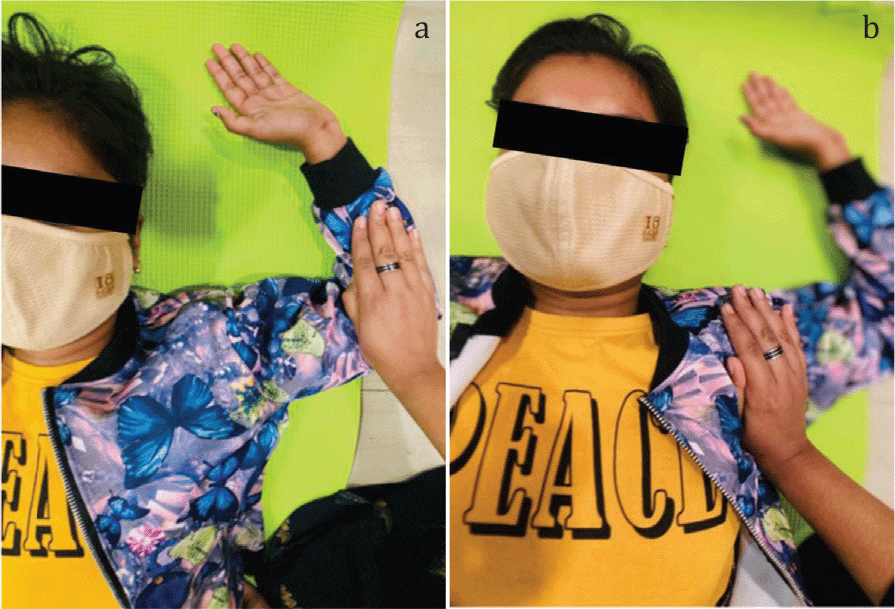
Figure 2a & 2b: Application of pressure on ‘anterior pituitary’ point.
3. Thyroid: The patient continued to lie down while the therapist located the thyroid gland at the base of the neck just below the Adams’ apple. Nominal pressure was applied on the bilateral thyroid gland with the fingers flexed inside. It was repeated four times continuously on either side with no breaks in between. Not only it increased the secretion of TSH, T3 and T4 hormones thereby regulating the metabolism, but also impaired a long-term beneficial effect on the heart and kidneys [Figure 3].
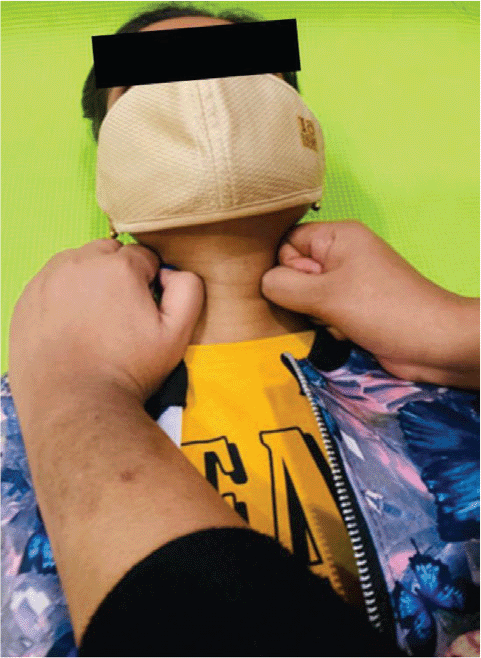
Figure 3: Application of pressure on ‘thyroid’ point.
4. Acid: For this procedure, the patient had to lie down on the right side with the right leg stretched straight while the left leg was folded up bringing the knee at the line of the waist and preferably rested on a pillow. The pressure was then applied with the palm of the hand on the inner thigh of the right leg while slowly dragging the hand down towards the knee. It was continued for four more rounds then repeated on the other leg in the same manner. The application of pressure on this point was helpful as it lowered the level of fatigue or any incidence of body pain associated around the thigh region, as well as boosted the energy of the body as a whole [Figure 4a & 4b].
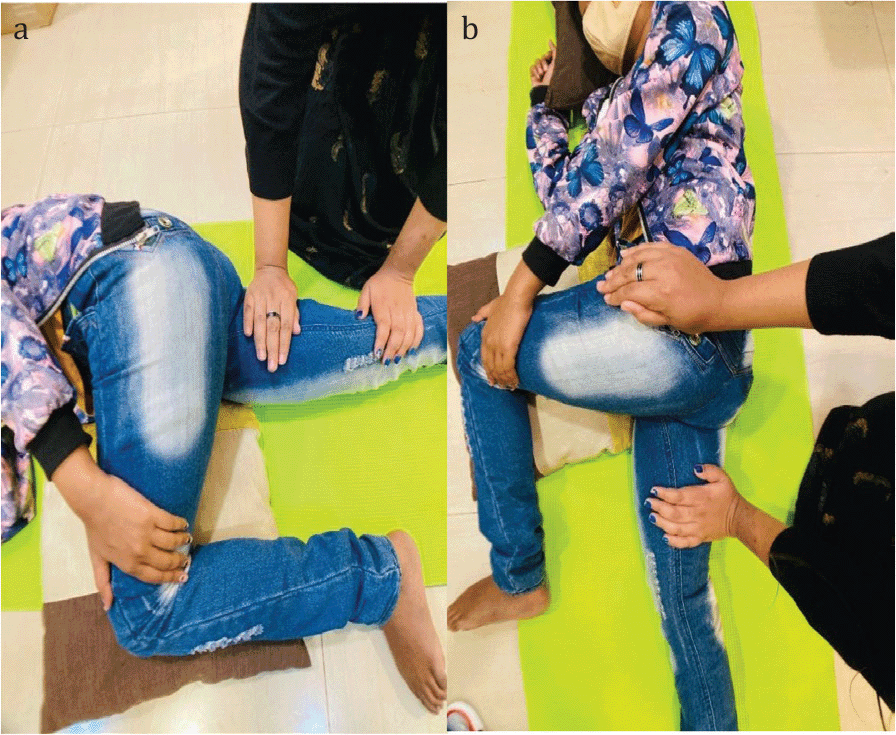
Figure 4a & 4b: Application of pressure on ‘acid’ point.
5. Chest: The application of this technique involves applying pressure to the bilateral chest, with the palms radiating outwards towards the upper shoulders. Pressure was applied simultaneously for twelve times on each side. This type of neurotherapy was good for maintaining the overall acid-base balance of the body [Figure 5a & 5b].
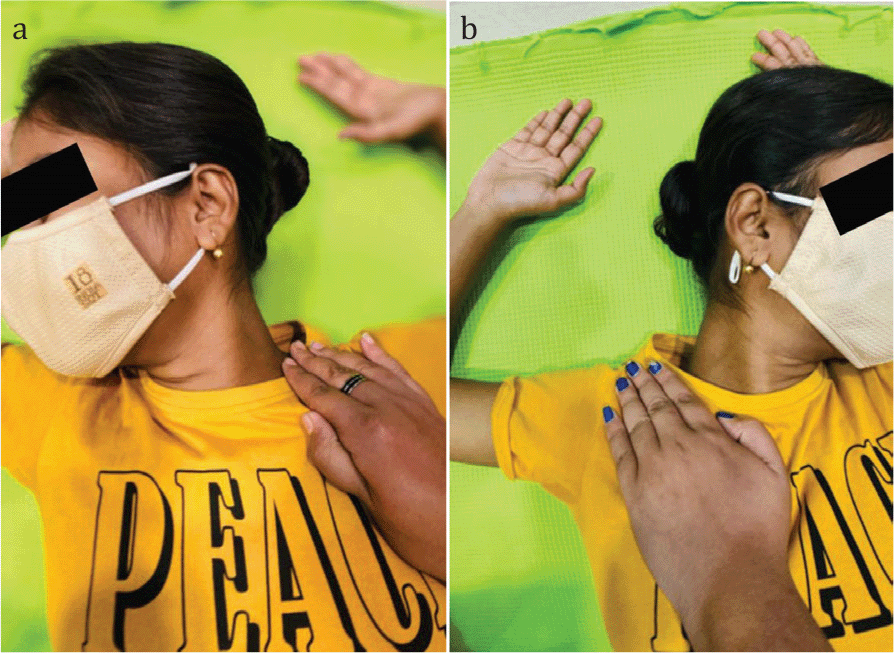
Figure 5a & 5b: Application of pressure on ‘chest’ point.
Clinical Outcome
After 8 weeks of periodic application of therapy (4 therapy per week), the serum TSH level (2.60 µIU/mL) successfully reduced to normal range. This was accompanied with further decrease in serum T3 and T4 levels (Table 1). Furthermore, the patient did report a boost in overall energy, improvement in mood and better bowel movements. Post the completion of neurotherapy, the patient was followed telephonically for the re-occurrence of any SH-related symptoms or to confirm any potential after-effects of this therapy. We are delighted to confirm that the patient graciously provided positive feedback regarding the entire journey and appeared genuinely pleased with the ultimate result.
Table 1: Variation of TSH, T3 and T4 in this case (pre and post therapy).
| Date of test | TSH (µIU/mL) | T3 (ng/ml) | T4 (µIU/mL) |
|---|---|---|---|
| 03.11.2022 | 9.85 | 1.79 | 10.17 |
| 27.12.2022 | 2.60 | 1.03 | 8.70 |
Discussion
SH is a common biochemical condition causing fatigue and mood swings. Treatment of SH is essential to prevent the advancement of the condition into overt hypothyroidism. The choice of treatment primarily includes medicinal interventions, most common drug being Levothyroxine. We have mentioned a familiar case of SH in a 23-year old woman and studied the effectiveness of an alternative treatment called “Neurotherapy” in treating the same. It is to be noted here that it is the first time this treatment is being applied on a patient with SH. Based on the post-therapeutic reports, it can be suggested that this novel therapy has the potential to be utilized as an additional treatment for successfully managing SH. The therapy works wonders by identifying the source of origin thereby modifying the physiochemical structure of the thyroid gland. It provides an effective solution to SH with no additional side-effects or after-effects, as asserted by the patient during her 6-month follow-up sessions. The blood samples for the laboratory examination were taken in the morning hours in fasting condition for both pre and post therapy, eliminating the risk of diurnal variations. Precise application of the therapy on the accurate pressure point is essential for the cure of the condition hence it is important that only trained neurotherapists perform the treatment. With the worldwide increase in prevalence of SH, it has become important to spread awareness of these remarkable non-invasive healing techniques for the betterment of human race.
Conclusion
Neurotherapy has shown promising results in the management of subclinical hypothyroidism, suggesting its potential as an alternative therapeutic approach for patient care and treatment.
Limitation
The current report constitutes a solitary case study. For future, randomised control trials with larger sample size is required to prove the effectiveness of neurotherapy on sub-clinical hypothyroidism.
Acknowledgements
I would like to extend my gratitude to the patient for giving consent to write this case study. Additionally, I wish to express my appreciation to the dedicated staff at the Nirogalaya Institute of Wellness Research and Training for their invaluable assistance.
Authors’ contribution
DV: Conceptualization, Methodology and Data curation; PD: Scientific advisor, Supervision, Data analysis and Writing the paper.
Informed consent
The detailed therapy was verbally explained to the patient, and prior approval was obtained from the patient before the detailed information was shared, and a written consent form was signed by the patient.
Source of funding
None
Conflict of interest
None
Abbreviations
TSH – Thyroid stimulating hormone, T3 – Triiodothyronine, T4 – Thyroxine, µIU/mL – micro-international units per milliliter, ng/ml – nanogram per milliliter.
Received Date: 07-09-2023; Revised Date: 17-11-2023
Accepted Date: 07-12-2023
References
1. Javed Z, Sathyapalan T. Levothyroxine treatment of mild subclinical hypothyroidism: a review of potential risks and benefits. TherAdvEndocrinolMetab 2016; 7(1): 12–23.
2. Peeters RP. Subclinical Hypothyroidism. N Engl J Med 2017; 377(14): 1404.
3. Biondi B, Cappola AR, Cooper DS. Subclinical Hypothyroidism: A Review. JAMA 2019; 322(2): 153–60.
4. Fatourechi V. Subclinical hypothyroidism: an update for primary care physicians. Mayo ClinProc 2009; 84(1): 65–71.
5. Sue LY, Leung AM. Levothyroxine for the Treatment of Subclinical Hypothyroidism and Cardiovascular Disease. Front Endocrinol 2020; 11: 591588.
6. Peeters RP. Subclinical Hypothyroidism. N Engl J Med 2017; 376(26): 2556–2565.
7. Vanderpump MP, Tunbridge WM, French JM, Appleton D, Bates D, Clark F, et al. The incidence of thyroid disorders in the community: a twenty-year follow-up of the Whickham Survey. ClinEndocrinol 1995; 43(1): 55–68.
8. Kvetny J, Heldgaard PE, Bladbjerg EM, Gram J. Subclinical hypothyroidism is associated with a low-grade inflammation, increased triglyceride levels and predicts cardiovascular disease in males below 50 years. ClinEndocrinol 2004; 61(2): 232–8.
9. Takashima N, Niwa Y, Mannami T, Tomoike H, Iwai N. Characterization of subclinical thyroid dysfunction from cardiovascular and metabolic viewpoints: the Suita study. Circ J 2007; 71(2): 191–5.
10. Vanderpump MP, Tunbridge WM, French JM, Appleton D, Bates D, Clark F, et al. The incidence of thyroid disorders in the community: a twenty-year follow-up of the Whickham Survey. ClinEndocrinol 1995; 43(1): 55–68.
11. Huber G, Staub JJ, Meier C, Mitrache C, Guglielmetti M, Huber P, et al. Prospective study of the spontaneous course of subclinical hypothyroidism: prognostic value of thyrotropin, thyroid reserve, and thyroid antibodies. J ClinEndocrinolMetab 2002; 87(7): 3221–6.
12. Gandhi A, Singh L. Impact of neurotherapy treatment on knee pain. IntegrativeMedicineCaseReports 2020; 1(1): 11–12.
13. Dev D, Dutta P. A novel approach to treat polycystic ovarian syndrome (PCOS) patients. Biomedicine 2022; 42(4): 841–3.
14. Gopal R, Gandhi A. Impact of neurotherapy treatment in pain relief among patients having low back pain. IntJIndianPsychol 2023; 11(3): 110–17.